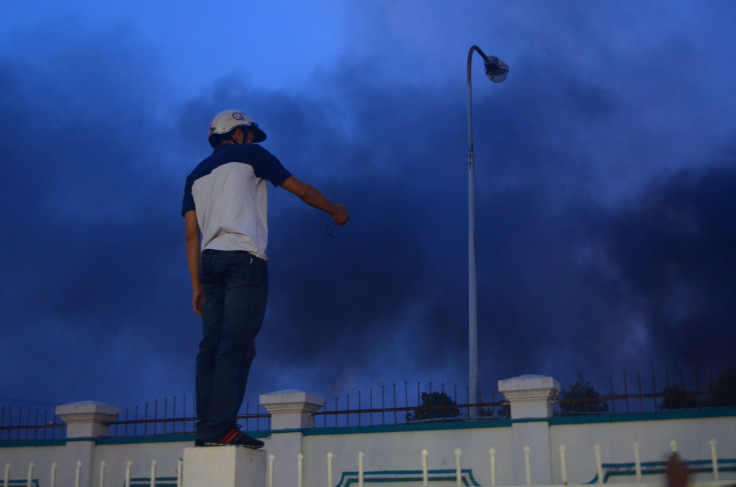Anti-China Riots in Vietnam Following South China Sea Standoff Spark Online Vitriol Among Chinese

Anti-China riots and looting escalated on Wednesday at the site of a future steel mill in Vietnam, leaving at least two dead and 129 people injured as foreign-owned factories shut down and Chinese workers fled the country, according to Bloomberg News.
The outbreak of violence is one of the worst breakdowns in Sino-Vietnamese relations since the two neighbors fought a brief border war in 1979, and reaction on China's social media has been strong.
Taiwan’s Formosa Plastics Group, one of the biggest investors in Vietnam, said a steel plant that it is building in Vung Ang, in the central province of Ha Tinh, was set ablaze on Wednesday after its Vietnamese and Chinese employees fought over China’s presence in a disputed area of the South China Sea. The protests could hurt Vietnam's growing manufacturing center’s business-friendly reputation and damage its ability to source components and manufactured goods for global consumers.
The exact number of dead and injured remains unclear. Though local media in Vietnam has confirmed only one fatality, Chinese state-run Xinhua News Agency has reported two Chinese nationals dead. A doctor told Reuters by phone that five Vietnamese workers and 16 other people described as Chinese were killed on Wednesday night during the rioting.
In China, angry bloggers took to its version of Twitter to voice their concerns about the tensions. “Vietnam is doing this because China did not react when similar anti-Chinese riots occurred in Indonesia,” Weibo user 启扉2013 said in an editorial published in the Chinese-language newspaper Global Times. The comment was in reference to the May 1998 riots in Indonesia, when ethnic Chinese became victims of violent mobs.
“This is how China’s anti-Japanese riots turned out too!”user yellowroc said in reference to a series of demonstrations across major Chinese cities in 2012. Those riots were instigated by the escalation of the Senkaku / Diaoyu Islands dispute between the two countries.
“Now we finally know, how foreigners saw us Chinese when we were carrying on anti-Japanese protests,” 王凯毅 said. “Protests aside, social order has to be maintained!”
Some observers expressed concern that the situation could become grave. Beijing-based journalist and consultant Bill Bishop, who has lived in Beijing since 2005, said Thursday on Twitter that unlike China’s other South China Sea disputes, Vietnam is willing to fight.
“Vietnam not like Philippines, won't cave over tourist boycott & rotting mangoes. If China wants a fight Vietnam will oblige. Dangerous time,” Bishop said in reference to a Chinese tourist boycott of the Philippines and a ban on certain agricultural imports from there.
China’s Foreign Ministry spokeswoman, Hua Chunying, said that the Vietnamese government has overlooked violence that threatens the local population of expatriate Chinese. "The looting and stealing that has taken place at Chinese businesses and [affected] Chinese people has a direct relationship with Vietnam's winking at and indulging law breakers there."
On May 1, Beijing deployed an oil rig in waters claimed by Vietnam, sitting 70 miles inside Vietnam’s exclusive economic zone, according to the United Nation’s Convention of the Law of the Sea. China has disputed that characterization and has countered with its own concept called the "nine-dash line," which it said is based on historic claims.
A confrontation one week later between a Chinese vessel and two Vietnamese ships off the disputed waters of the Spratly Islands is believed to have sparked the clashes in Vietnam.
Vietnam’s Foreign Ministry in Hanoi said that a Chinese vessel intentionally rammed into Vietnamese ships, causing considerable damage to the ship and injuring sailors on board.
© Copyright IBTimes 2024. All rights reserved.






















